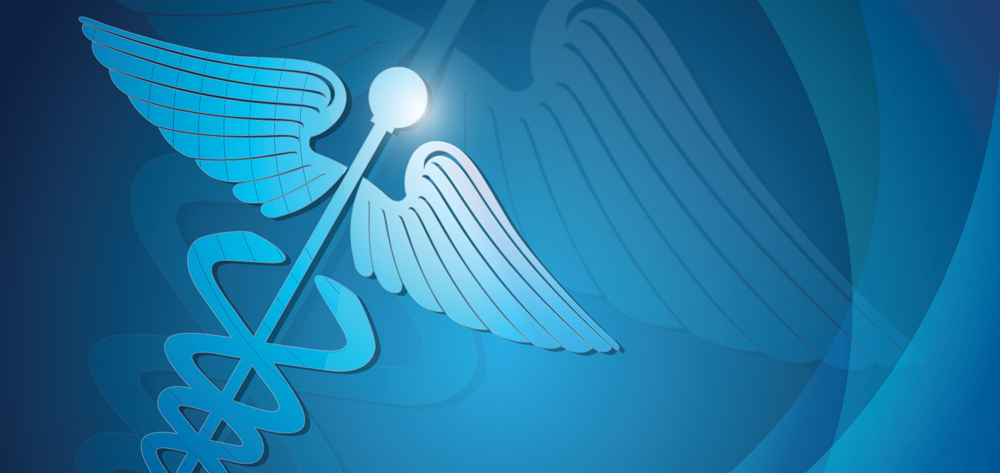As a nurse, you know that needlestick injuries and splashes with a patient’s body fluids may occur during patient care. But do you know what to do when it happens? Many nurses are confused about the steps to take after an exposure. This article discusses what you need to know, beginning with how to protect yourself.
Follow the standards
Occupational exposure to a patient’s body fluids may occur through parenteral (needlestick or sharp object injury), mucous membrane (splash of body fluids to eye, nose, or mouth), and nonintact skin exposure (contact of a patient’s body fluids with nonintact skin). Most exposures are caused by a failure to follow standard precautions, such as recapping the needle, not using personal protective equipment (PPE), or unintentional disposal of sharps in an inappropriate container. Adherence to standard precautions, including strict use of PPE is essential to prevent bloodborne pathogen exposures. Remember: It only takes a small paper cut on a finger to expose you to a mucocutaneous infection with a potentially deadly virus.
The estimated annual number of needlestick and sharps injuries in the United States is around 385,000. These injuries may expose healthcare workers to more than 20 different bloodborne pathogens, the most important of which are hepatitis B virus, hepatitis C virus, and human immunodeficiency virus (HIV). All blood, body fluids, secretions, and excretions, except sweat, can contain transmissible infectious agents. The risk of developing HIV after a needlestick injury is about 0.3% (after a splash 0.09%), the risk for hepatitis B is 6% to 30%, and the risk for hepatitis C after a needlestick is about 1.8 % (much lower after a splash). The following circumstances increase the risk of infection:
- A hollow-bore needle caused the injury.
- The area of exposure was penetrated deeply.
- Blood was injected during the injury.
- The patient has a high viral load.
Most of the policies in institutions where you work are based on guidelines from the Centers for Disease Control (CDC), the Department of Health and Human Services (DHHS), and local departments of health. Become familiar with policies that discuss exposure to body fluids so you can better coordinate your actions in case of exposure and seek prompt evaluation and prophylactic treatment.
If you experience a needlestick or sharps injury or are exposed to a patient’s body fluids during the course of your work, remember these key points: clean the injured site immediately, notify your supervisor, and seek evaluation.
Clean the injured site immediately
Washing the injured area with soap and water will wash off the residual body fluids. If you sustain a splash, flush the nose, mouth, or skin with water. If body fluids splash into your eyes, irrigate them with clean water, saline, or sterile irrigants.
Notify your supervisor
Report the incident to your supervisor; the injury may need to be reported to the organization’s Workers Compensation insurer.
Give the specific date, time, and details of the injury. If the injury occurred as a result of malfunctioning equipment, further actions on behalf of the management and institution’s safety committee might be needed. You may need your supervisor’s assistance in finding out the source of the patient’s risk status and in ordering screening tests on the patient. Many institutions do not allow the injured worker to access the patient’s information directly, so the supervisor may serve as a liaison between you and the patient’s physician.
Seek evaluation
After you clean the injured site and notified your supervisor, immediately seek post-exposure evaluation. You may do so by visiting the Employee Health Service or the Emergency Department in your institution or the Emergency Department in a local hospital.
The CDC recommends screening a source patient for hepatitis B surface antigen, hepatitis C antibodies, and HIV. State regulations related to informed consent and confidentiality must be followed. For patients who cannot be tested, it’s important to consider their medical diagnosis, clinical symptoms, and their history of risk behaviors. It’s not advisable to test the needle or sharp that caused the injury for bloodborne pathogens, since the results may not be reliable.
You can usually expect to be tested for hepatitis B, hepatitis C, and HIV; testing to assess HIV and HCV viral load is not routinely recommended. Your initial screening is a baseline so that your healthcare provider can monitor any changes.
Post-exposure prophylactic treatment is prescribed according to CDC guidelines and considering the source patient’s risk factors and specifics of the exposure situation. Prophylaxis should be started immediately, but no later than 36 hours for HIV and 24 hours to 7 days for hepatitis B. There is no prophylaxis available for hepatitis C.
Hepatitis B prophylaxis consists of Hepatitis B Immunoglobulin, along with initiation of hepatitis B vaccination. If you are already immune to hepatitis B, no prophylaxis is necessary.
HIV prophylaxis consists of a recommended 28-day course of anti-viral medication. In the past, HIV prophylaxis was often associated with severe side effects, which led to early discontinuation of prophylactic treatment and low compliance. Newer drug combinations such as tenofovir plus emtricitabine (Truvada) or zidovudine–lamivudine (Combivir) are associated with substantially less toxicity and improved adherence. Depending on the HIV status of the source patient, additional medication may be prescribed. These could be ritonavir–lopinavir (Kaletra), ritonavir plus atazanavir or ritonavir plus darunavir. Observational data suggests that post-exposure HIV prophylaxis is approximately 80% effective in averting subsequent HIV seroconversion, but it’s not a guarantee of protection.
As a part of HIV screening you will receive HIV counseling and advised to refrain from donating blood, plasma, organs, tissue, or semen; to avoid breastfeeding; to use methods to prevent pregnancy; and to use risk reduction methods including latex barriers during sex, not sharing injection equipment, and abstaining from risk behaviors. You will be counseled about the signs and symptoms of acute retroviral syndrome (flu-like syndrome), and advised to return for additional testing at the onset of such symptoms.
During the course of prophylactic treatment for HIV and hepatitis B, you will be advised to return for additional blood tests (complete blood count, creatinine, and liver enzymes) at 2 weeks and 4 weeks to monitor for drug toxicity. If side effects occur while you are taking post-exposure prophylaxis, tell your prescribing provider. In some cases prophylactic medication might be changed and additional tests might be needed.
After you complete prophylactic treatment, you’ll need follow-up screening at 6 weeks, 3 months, and 6 months from the date of exposure. A 12-month follow up is recommended if hepatitis C conversion occurred, which may lead to delayed HIV conversion.
Safety measures
Needlestick exposures and splash incidents at the workplace are dangerous and can be potentially lethal. However, a safer work environment can be achieved by following Occupational Safety and Health Administration (OSHA) guidelines. The OSHA Needlestick Safety and Prevention Act requires employers to institute a written exposure control plan and create worksite-specific needlestick prevention programs to protect employees. These programs include using a Sharps Injury Log, selecting and evaluating safer medical devices based on employee feedback and device effectiveness, and complying with standard precautions, including use of PPE.
Over the last decade a variety of safety-featured devices have become available, including needless systems, self-sheathing needles, and blunt suture needles. These devices, along with sharps disposal containers, are intended to significantly decrease potential exposures to bloodborne pathogens at the workplace. It’s important that when new devices become available at the workplace, you get trained on how to use them properly. Voice your opinion to the management about safety features of the devices, and adhere to OSHA Needlestick Safety and Prevention Act guidelines for safer practices.
Alisa Katz is director of the employee health service at New York Methodist Hospital in Brooklyn.
Selected references
A Quick Guide to Post-Exposure Prophylaxis in the Health Care Setting. http://www.mystericycle.com/productdata/ExternalFile/TrainingResources/Post%20Exposure%20Guide.pdf Accessed March 12, 2013
Centers for Disease Control and Prevention. Emergency Needlestick Information. Available at:
http://www.cdc.gov/niosh/topics/bbp/emergnedl.html Accessed November 5, 2013.
Delisio N. Bloodborne infection from sharps and mucocutaneous exposure: A continuing problem. American Nurse Today. 2012;7(5). Available at: https://www.myamericannurse.com/bloodborne-infection-from-sharps-and-mucocutaneous-exposure-a-continuing-problem/ Accessed November 5, 2013.
Landovitz RJ, Currier JS. Postexposure prophylaxis for HIV infection. N Eng J Med. 2009;361:1768-75. Available at: http://www.nejm.org/doi/full/10.1056/NEJMcp0904189 Accessed on November 5, 2013.
Medscape. Body Fluid Exposures. Available at: http://emedicine.medscape.com/article/782611-overview Accessed November 5, 2013.
OSHA Compliance Partners. OSHA’s Plan to Reduce Needlestick Injuries. Available at: http://www.oshacompliancepartners.com/wp-content/uploads/2011/04/OSHAs-Place-To-Reduce-Needlestick-Injuries.pdf Accessed on November 5, 2013.
Saia M, Hofmann F, Sharman J, et al. Needlestick injuries: incidence and cost in the United States, United Kingdom, Germany, France, Italy, and Spain. Biomed Int. 2010;1:41-9. Available at:
http://www.bmijournal.org/index.php/bmi/article/viewFile/20/14 Accessed November 5, 2013.
United States Department of Labor. Occupational Safety & Health Administration. How to Prevent Needlestick Injuries. Available at: http://www.osha.gov/Publications/OSHA3161/osha3161.html Accessed on November 5, 2013.



















2 Comments.
hiv symptoms early warning signs :
Symptoms of aids does not appear in the start. However when it’s starting and affecting, then the following symptoms are appeared.
1: The patient started attaining inter current illness without any reason.
2: Human immunity gets weak slowly slowly.
3: Patient feels fever for several months.
4: Lymph balls swollen. Specially balls around the neck begin swelling and feels pain.
5: Similarly under arms balls and between the legs balls also be swollen. The situation remains for three months to four years.
6: Patient feels headache bit by bit.
If you have significant liver dysunction as a result of the disease maybe your surgeon was reluctant to consider you as an implant candiate. Second opinion?